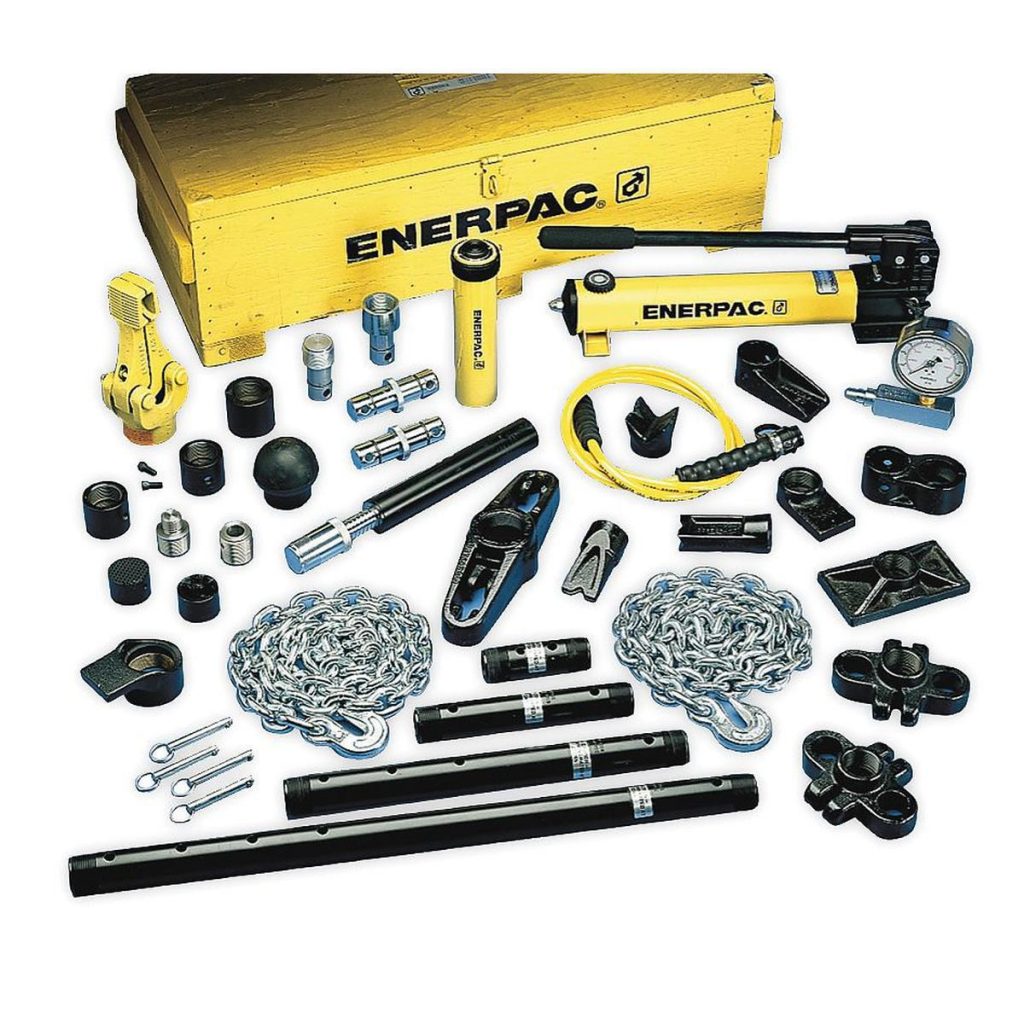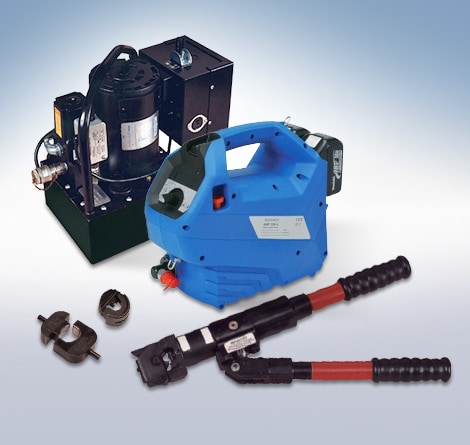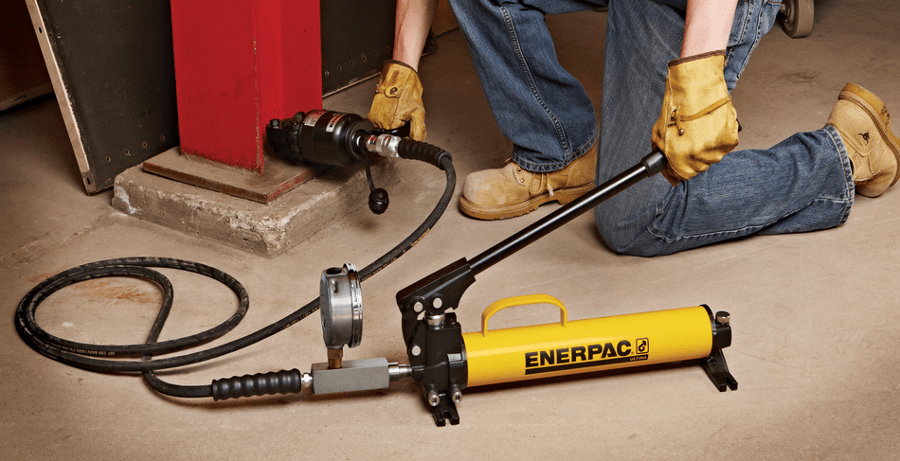Hydraulic tooling utilizes hydraulic fluid to power various tools and equipment, enhancing precision and efficiency. It is widely used in industries like construction, manufacturing, and automotive.
Hydraulic tooling operates by using pressurized hydraulic fluid to generate force. This technology allows for precise control and powerful performance. Industries such as construction, manufacturing, and automotive benefit from hydraulic tools due to their efficiency and reliability. These tools can handle heavy-duty tasks with ease, reducing manual labor and increasing productivity.
They are essential for applications requiring high force and accuracy, such as lifting, pressing, and cutting. With advancements in hydraulic technology, these tools continue to evolve, offering more capabilities and improved performance.

Credit: www.applied.com
Introduction To Hydraulic Tooling
Hydraulic tooling plays a vital role in many modern industries. These tools use fluid power to perform various tasks efficiently and precisely. From construction to manufacturing, hydraulic tools are indispensable. Let’s dive deeper into what hydraulic tooling is and its significance in today’s projects.
What Is Hydraulic Tooling?
Hydraulic tooling consists of tools powered by hydraulic systems. These tools convert fluid power into mechanical power. This allows them to lift, push, pull, and perform other tasks with great force. Some common hydraulic tools include jacks, pumps, and presses.
| Tool | Function |
|---|---|
| Hydraulic Jack | Used to lift heavy loads |
| Hydraulic Pump | Supplies fluid power to systems |
| Hydraulic Press | Applies high pressure to shape materials |
Importance In Modern Projects
Hydraulic tooling is crucial in many modern projects. These tools offer unparalleled precision and power. They are faster and more efficient than manual tools.
- Safety: Hydraulic tools reduce human effort and risk.
- Efficiency: They complete tasks quickly and accurately.
- Versatility: These tools are used in various applications.
Hydraulic tooling also helps in maintaining consistent quality. This is vital for industries like aerospace and automotive. The precision offered by these tools ensures high standards.
In construction, hydraulic tools streamline complex tasks. They make projects faster and safer. This leads to timely project completion and reduced costs.
- Aerospace: Ensures precision in manufacturing parts.
- Automotive: Helps in assembling and repairing vehicles.
- Construction: Used for lifting heavy materials and equipment.
In summary, hydraulic tooling is integral to modern industrial projects. Its impact spans safety, efficiency, and precision.

Credit: cbhymac.com
Types Of Hydraulic Tools
Hydraulic tools are powerful and versatile. They use liquid power to perform tasks. Various types of hydraulic tools exist. Each serves a unique purpose. Below, we explore some common types.
Hydraulic Jacks
Hydraulic jacks lift heavy loads with ease. They use a pump and fluid pressure. These jacks are common in automotive shops. They help lift cars for repairs.
- Bottle Jacks: Compact and portable. Ideal for small vehicles.
- Floor Jacks: Larger and more stable. Suitable for bigger vehicles.
- Scissor Jacks: Lightweight and easy to use. Best for emergencies.
Hydraulic Presses
Hydraulic presses shape and compress materials. They use a hydraulic cylinder. These tools are essential in manufacturing. They help form metal and plastic parts.
| Type | Use |
|---|---|
| Workshop Press: | Used in repair shops. Ideal for pressing bearings. |
| H-Frame Press: | Offers more control. Used in precision tasks. |
| C-Frame Press: | Compact design. Suitable for small workspaces. |
These tools make heavy tasks easier. They save time and effort. Choose the right tool for your needs.
Advantages Of Hydraulic Tooling
Hydraulic tooling offers many benefits. It is popular in many industries. This section explores the key advantages of hydraulic tooling.
Enhanced Efficiency
Hydraulic tools are known for their enhanced efficiency. They use hydraulic power to perform tasks quickly. This saves time and increases productivity.
For example, in construction, hydraulic hammers break rocks faster. This helps workers finish projects on time. The tools also require less manual effort. This reduces worker fatigue.
Improved Precision
Improved precision is another key advantage. Hydraulic tools offer high accuracy. This ensures tasks are done correctly.
Precision is crucial in industries like aerospace. Hydraulic presses shape metal parts with exact measurements. This ensures safety and quality in aircraft construction. The precision of hydraulic tools minimizes errors.
| Advantages | Description |
|---|---|
| Enhanced Efficiency | Completes tasks quickly, saves time, increases productivity. |
| Improved Precision | High accuracy, ensures correct task completion, minimizes errors. |
Key Components
Hydraulic tooling is used in various industries. It relies on several key components. These components ensure efficiency and power. Understanding these parts is important.
Hydraulic Pumps
Hydraulic pumps are the heart of the system. They convert mechanical power into hydraulic energy. This energy powers the entire tool. There are different types of pumps:
- Gear pumps: Simple and cost-effective.
- Piston pumps: High pressure and efficiency.
- Vane pumps: Smooth and quiet operation.
Each pump type has its own use. The right pump ensures optimal performance.
Hydraulic Cylinders
Hydraulic cylinders are crucial for movement. They convert hydraulic energy into linear motion. The main parts of a hydraulic cylinder include:
| Component | Description |
|---|---|
| Barrel | Holds the cylinder components together. |
| Piston | Creates the pressure difference. |
| Rod | Connects the piston to the machine. |
Hydraulic cylinders come in various sizes. Choose the right size for your task.
Applications In Various Industries
Hydraulic tooling is crucial in many industries. Its versatility makes it indispensable. Below are some key applications in different sectors.
Construction
Hydraulic tools play a vital role in construction. They make tasks easier and faster. Here are some common uses:
- Excavators: These machines dig trenches and foundations.
- Hydraulic hammers: They break rocks and concrete.
- Lift systems: These lift heavy materials to high places.
Construction workers rely on these tools. They save time and effort. The tools also enhance safety on-site.
Manufacturing
Hydraulic tools are essential in the manufacturing industry. They offer precision and power. Below are some key applications:
- Presses: These shape and cut materials.
- Injection molding machines: They create plastic parts.
- Clamping systems: These hold materials firmly during machining.
Manufacturers use these tools for various tasks. They improve production efficiency. The tools also ensure high-quality outputs.
| Industry | Common Hydraulic Tools | Primary Function |
|---|---|---|
| Construction | Excavators, Hydraulic hammers, Lift systems | Digging, Breaking, Lifting |
| Manufacturing | Presses, Injection molding machines, Clamping systems | Shaping, Creating, Holding |

Credit: www.te.com
Maintenance Tips
Maintaining hydraulic tools is crucial for their longevity and performance. Proper care can prevent breakdowns and costly repairs. Below are some essential maintenance tips to keep your hydraulic tools in top shape.
Regular Inspection
Conducting regular inspections ensures early detection of wear and tear. Look for any leaks, cracks, or damage in the hydraulic hoses and fittings.
- Check fluid levels frequently.
- Inspect seals and gaskets for wear.
- Examine the pump for unusual noises.
- Test the pressure settings regularly.
Regular checks can prevent unexpected failures and extend the tool’s life.
Proper Storage
Storing hydraulic tools correctly is essential for their longevity. Always store tools in a clean, dry place.
| Storage Tip | Reason |
|---|---|
| Keep away from moisture | Prevents rust and corrosion |
| Use protective covers | Protects from dust and debris |
| Store upright | Prevents fluid leaks |
| Label each tool | Ensures easy identification |
Proper storage can make your tools last longer and work better.
Safety Considerations
Hydraulic tooling is powerful and efficient. It requires strict safety measures. Ignoring safety can lead to severe injuries. This section covers key safety considerations.
Proper Training
Proper training is essential for safe hydraulic tooling use. Every worker must undergo comprehensive training. They should understand how to operate tools correctly. Training should include:
- Understanding tool manuals
- Recognizing potential hazards
- Performing routine inspections
- Following emergency protocols
Companies should provide regular refresher courses. This keeps workers updated on latest safety practices. Always prioritize training for new and old employees.
Use Of Protective Gear
Wearing protective gear minimizes injury risks. Essential protective gear includes:
| Gear | Purpose |
|---|---|
| Safety Gloves | Protect hands from cuts and abrasions |
| Safety Goggles | Shield eyes from flying debris |
| Hard Hats | Protect head from falling objects |
| Steel-Toe Boots | Guard feet from heavy impacts |
Check gear before use. Ensure it fits well and is in good condition. Discard damaged gear immediately. Always encourage a culture of safety.
By focusing on proper training and protective gear, workplaces can avoid many accidents. Stay safe and keep tools maintained.
Future Of Hydraulic Tooling
The future of hydraulic tooling looks bright. Innovations and sustainability trends drive this growth. These advancements improve efficiency, safety, and environmental impact.
Technological Innovations
Technological innovations redefine hydraulic tooling. Smart tools with sensors provide real-time data. This data improves performance and reduces downtime.
Automation is another game-changer. Automated systems reduce human error. They also increase precision and speed. Robotics integration enhances tool performance. This integration ensures consistent results.
3D printing is revolutionizing hydraulic parts production. Custom parts are now easier to produce. This reduces costs and improves availability.
Sustainability Trends
Sustainability is vital in hydraulic tooling. New materials reduce environmental impact. Biodegradable fluids replace harmful chemicals. These fluids are safer for the planet.
Energy efficiency is a top priority. Modern hydraulic systems use less energy. This reduces operational costs and carbon footprints.
Recycling and reusing materials is also key. Circular economy models are emerging. These models focus on reducing waste and maximizing resource use.
| Technological Innovations | Sustainability Trends |
|---|---|
| Smart Tools with Sensors | Biodegradable Fluids |
| Automation | Energy Efficiency |
| Robotics Integration | Recycling and Reusing Materials |
| 3D Printing | Circular Economy Models |
The future of hydraulic tooling is exciting. Technological innovations and sustainability trends lead the way. These advancements promise a better, greener future.
Frequently Asked Questions
What Is A Hydraulic Tool?
A hydraulic tool uses pressurized fluid to perform tasks like lifting, cutting, or pressing. It provides high power and precision.
What Is A Commonly Used Hydraulic Tool?
A commonly used hydraulic tool is the hydraulic jack. It lifts heavy loads effortlessly using hydraulic pressure.
Which Of The Following Are Examples Of Hydraulic Tools?
Examples of hydraulic tools include hydraulic jacks, hydraulic pumps, hydraulic presses, and hydraulic torque wrenches. These tools use fluid power to perform tasks efficiently.
How Do Hydraulic Power Tools Work?
Hydraulic power tools use pressurized fluid to generate force. A motor pumps the fluid, creating high pressure. This pressure moves pistons or gears, powering the tool. The process allows for strong, precise operation.
Conclusion
Hydraulic tooling offers unmatched efficiency and precision. Investing in quality hydraulic tools can boost productivity and reduce downtime. Stay ahead by choosing reliable equipment tailored to your needs. Explore the benefits of hydraulic technology and transform your operations today. Enhance your projects with the power of hydraulic tooling for superior results.


